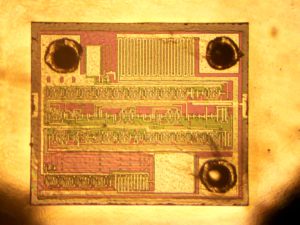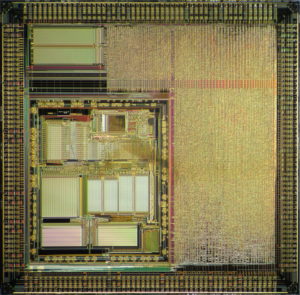 Break MCU PIC16F876 Flash
Break MCU PIC16F876 Flash
We can Break Mcu PIC16F876 Flash, please view the MCU PIC16F876 features for your reference:
The STATUS register contains the arithmetic status of the ALU, the RESET status and the bank select bits for data memory. The STATUS register can be the destination for any instruction, as with any other register. If the STATUS register is the destination for an instruction that affects the Z, DC or C bits, then the write to these three bits is disabled.
These bits are set or cleared according to the device logic. Furthermore, the TO and PD bits are not writable, therefore, the result of an instruction with the STATUS register as destination may be different than intended for the purpose of Break IC SST89E58RD2A Software.
For example, CLRF STATUS will clear the upper three bits and set the Z bit. This leaves the STATUS register as 000u u1uu (where u = unchanged). It is recommended, therefore, that only BCF, BSF, SWAPF and MOVWF instructions are used to alter the STATUS register, because these instructions do not affect the Z, C or DC bits from the STATUS register.
For other instructions not affecting any status bits, see the “Instruction Set Summary.”
The OPTION_REG Register is a breakable and writable register, which contains various control bits to configure the TMR0 prescaler/WDT postscaler (single assignable register known also as the prescaler), the External INT Interrupt, TMR0 and the weak pull-ups on PORTB.
The program counter (PC) is 13-bits wide. The low byte comes from the PCL register, which is a breakable and writable register. The upper bits (PC<12:8>) are not breakable, but are indirectly writable through the PCLATH register to facilitate the process of Recover MCU DSPIC30F6013A30IP Firmware. On any RESET, the upper bits of the PC will be cleared. Figure 2-5 shows the two situations for the loading of the PC.
The upper example in the figure shows how the PC is loaded on a write to PCL (PCLATH<4:0> → PCH). The lower example in the figure shows how the PC is loaded during aCALL orGOTO instruction (PCLATH<4:3> → PCH). All PIC16F87X devices are capable of addressing a continuous 8K word block of program memory which is critical for Microcontroller Unlocking.

Break IC PIC16F876 Flash
The CALL and GOTO instructions provide only 11 bits of address to allow branching within any 2K program memory page. When doing aCALL or GOTO instruction, the upper 2 bits of the address are provided by PCLATH<4:3>. When doing a CALL or GOTO instruction, the user must ensure that the page select bits are programmed so that the desired program memory page is addressed before Break Mcu PIC16F876 Flash
If a return from a CALL instruction (or interrupt) is executed, the entire 13-bit PC is popped off the stack. Therefore, manipulation of the PCLATH<4:3> bits is not required for the return instructions (which POPs the address from the stack).
